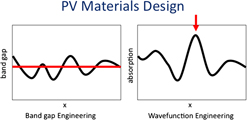Published online by Cambridge University Press: 04 November 2011

After some background discussion, this review will focus on some recent developments in the areas of theoretical studies of semiconductor electronic structure, photovoltaics, semiconducting boron nitride nanotubes, and the search for modified semiconductors and insulators with higher superconducting transition temperatures. The background discussion covers the evolution of studies of solids, which changed dramatically after the development of quantum theory. These conceptual changes resulted in methods for calculating properties of materials and theoretical frameworks for interpreting experimental measurements. In some cases, the theoretical approaches have been successful in predicting new materials and new properties. As stated above, a few examples will be given to illustrate the development of this field.